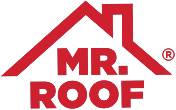As the summer heat has moved into North America this summer, it has brought to light the various necessities of proper attic and roof ventilation. We do a lot of roofs throughout the year, which puts our technicians in a variety of attic spaces, each of different spatial parameters and configurations. With all the variety, it’s always the same story with regard to ventilation. You can always tell an attic that is poorly ventilated because it’s at least forty to fifty degrees warmer than the rest of the house. This is an extreme temperature difference that can keep your home air conditioning unit working on overload all summer long, sending utility bills sky rocketing and possibly causing long term damage to your cooling unity.
It isn’t just a summertime issue either. In the winter this kind of heat build-up in the attic space can melt the snow that settles on your rooftop, creating pools of standing water on the roof called “ice dams.” These ice dams or pools can add tremendous weight to the roof and extra wear on the shingles, causing lasting damage to the rooftop.
Given the tremendous potential for wasted energy and exorbitant costs, we’ve prepared a few tips and tricks to ensure your home is properly ventilated.
Proper Attic Ventilation
- Attics should be insulated to R-38, which is approximately eighteen inches of insulation material.
- If there are portions of insulation that have been eroded down, don’t just slap some extra material on top. You’ll want to pull out the six inches remaining and put a full, fluffy eighteen inch piece of material in place. This will ensure proper insulation.
- Be aware of all soffit vents around the perimeter of the house and take steps to ensure these vents remain unblocked by debris, insulation, or outside materials.
- Install a thermometer in the attic that can broadcast the temperature to you remotely so you can monitor the situation on an ongoing basis and make the best decisions for your situation.
These few simple steps can make the difference of hundreds of dollars on your heating and cooling bills and maintain your home in better condition for years to come.








